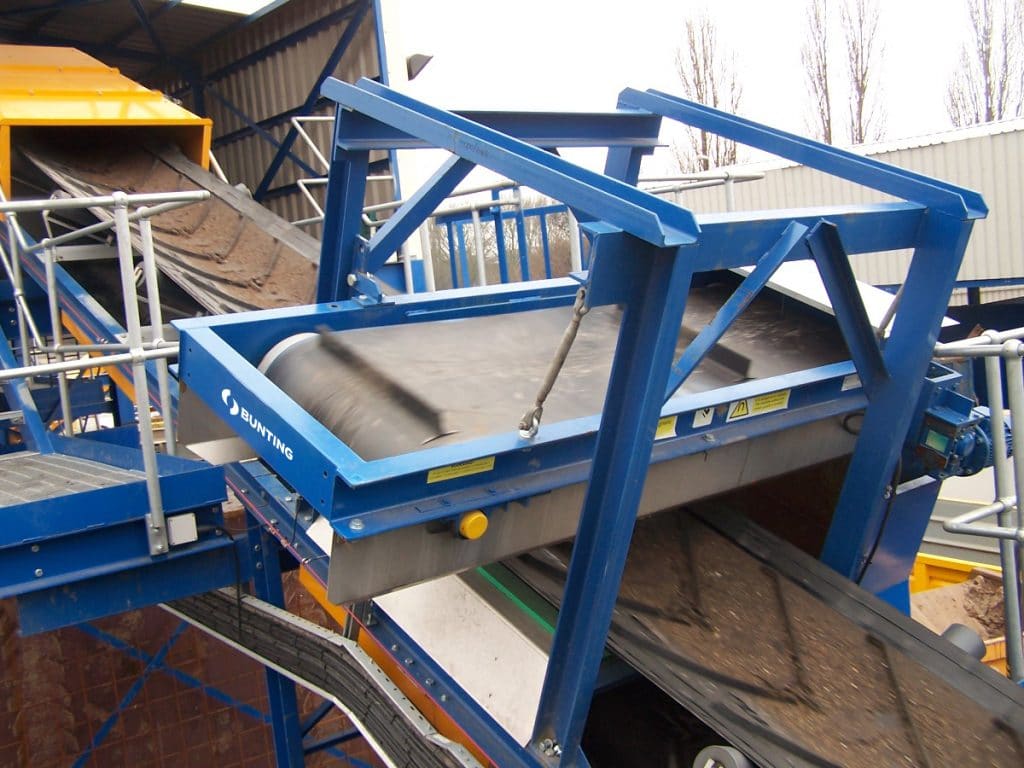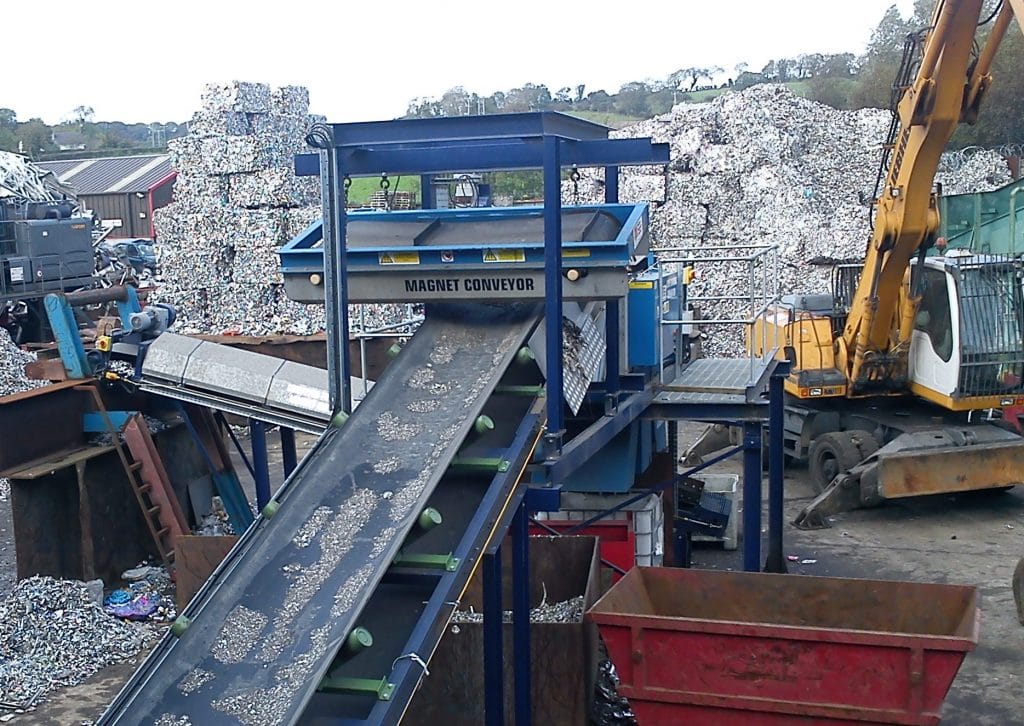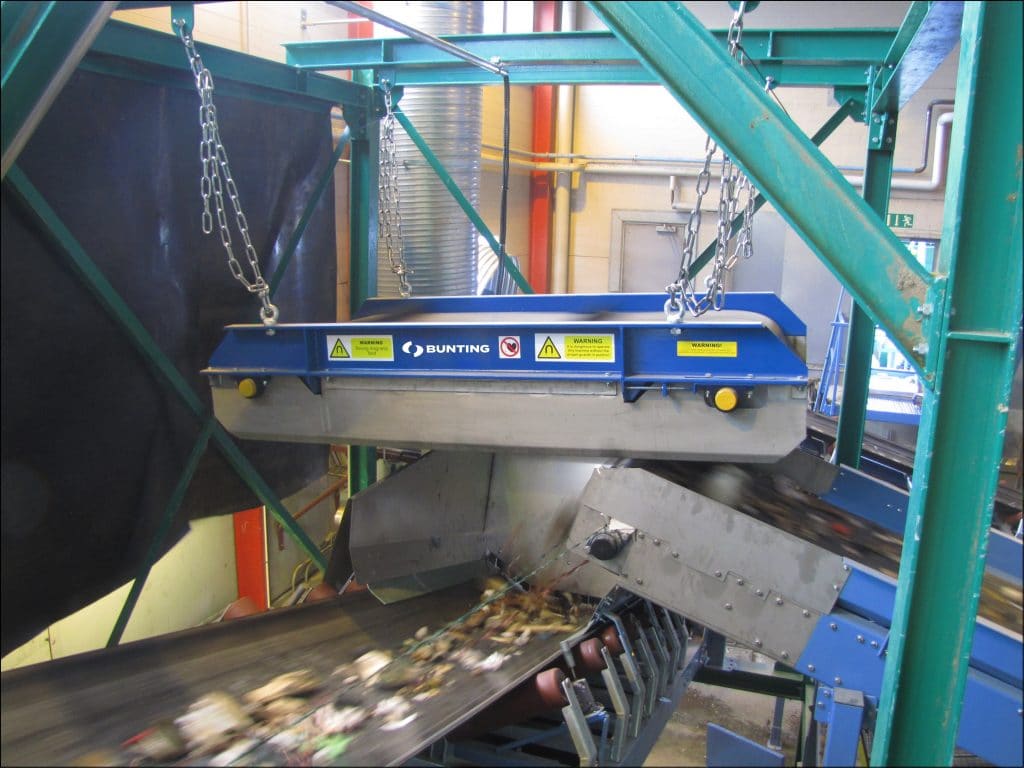3 Overband Magnet Installation Problems
By Paul Fears | 09 March 2020
The Permanent Overband Magnet is one of the most commonly used magnetic separators. Overband Magnets are found in most recycling plants recovering steel cans and other ferrous metals from a wide range of waste materials as well as in quarries (protecting crushers & screens) and on mobile plant (screens and crushers).
However, incorrect installation leads to poor levels of ferrous metal separation and recovery.

The Overband Magnet
The Overband Magnet has two pulleys mounted on a frame either side of a permanent magnetic block. A slated rubber belt continuously runs over the pulleys and across the face of the magnet block. The Overband Magnet is suspended over materials transported on a conveyor, attracting and extracting magnetic ferrous metals up from the burden, onto the rotating belt, which transfers the captured metal to a collection area.
Bunting-Redditch build hundreds of Overband Magnets annually.
Maximising Overband Magnet Performance
Incorrect, and easily rectifiable installation issues, dramatically affect the separation performance of an Overband Magnet. Often the original installation was correct, but over time the positioning has changed.
Here are 3 typical installation issues that can be easily remedied to improve the level of separation:
Overband Magnet Suspension Height
Every Overband Magnet is designed to operate at a specific suspension height above the conveyor. To accommodate an occasional surge of material, the Overband Magnet can be temporarily raised and then, as the magnetic field is further away from the conveyor belt, the separation performance falls. Often, after the Overband Magnet has been raised it is not returned to the original position resulting in an ongoing poor separation performance. For installations where material surges are common, there should be consideration for a larger Overband Magnet, designed to operate at a higher suspension height. In all other cases, the suspension height should be recorded and checked regularly as part of the daily or weekly maintenance regime.

Magnet Width vs Conveyor Width
Every model of Overband Magnet has a magnet block of a specific size. During the initial evaluation of the application, the Bunting team will consider both the width of the conveyor and the ferrous metal discharge point in determining the size of the magnet block. If the magnet block is not wide enough, ferrous metal can be lifted out of the conveyed waste and then discharged back onto the conveyor and not into the collection area.
Issues with the incorrect width of a magnet block commonly occur when an Overband Magnet is repositioned within a plant. The new location may have a wider conveyor belt or a discharge point that is further away. The remedial action is to consider purchasing an Overband Magnet suitable for the wider conveyor and relocating the narrower model to a conveyor similar to the original location.
Positioning over the Conveyor

The majority of Overband Magnets feature a magnet block that has a centrally-located single pole that projects a magnetic field down towards the conveyor. Subsequently, the maximum level of attraction and separation is achieved directly under the centre of the magnet block line. Often, and especially when the Overband Magnet is too narrow for the conveyor belt, the centre line is positioned to one side of the conveyor nearer the area of discharge. However, this means that it is less likely that any ferrous metal on the opposite side of the conveyor will be separated as the magnetic field is significantly lower.
By repositioning the Overband Magnet to sit centrally over the conveyor, the level of ferrous metal separation will improve;
- Application story: Junction City Mining Installs Overband Magnet in US Quarry
Free Advice
Correct positioning of an Overband Magnet ensures optimum ferrous metal separation performance. Simple and easy adjustments to the Overband Magnet suspension height and position can significantly improve ferrous metal recovery. Bunting’s application engineers are always available to review specific applications to optimise the separation performance.
For additional information on Overband Magnets or for any ferrous metal separation or recovery application, please contact us on:
Email: GKerr@buntingmagnetics.com
Telephone: +44 (0) 1527 65858
Follow us on social media
For further information or to discuss a specific project, please complete the following form